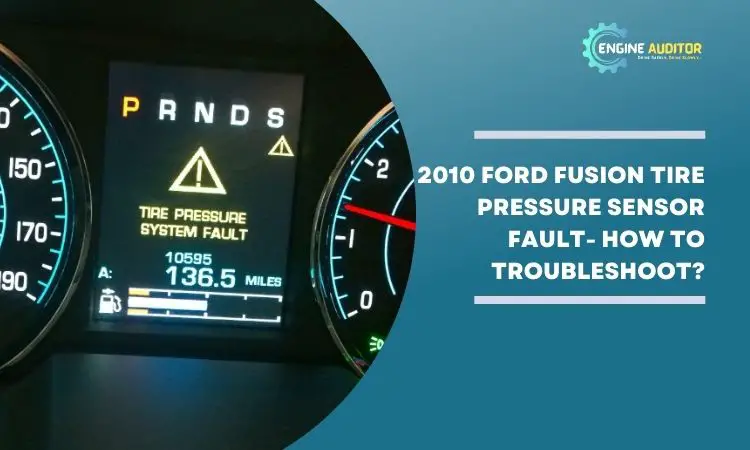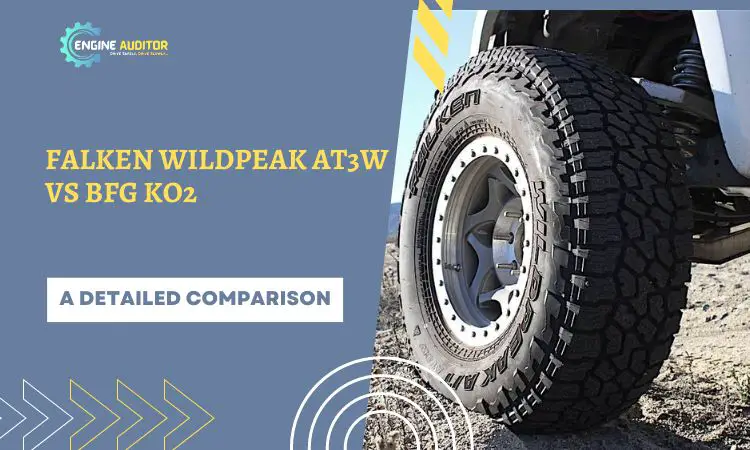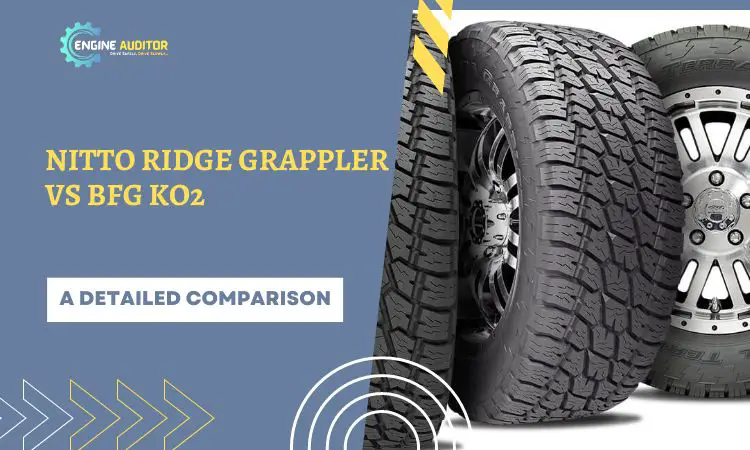Hey there! This post contains affiliate links to products. We may receive a commission for purchases made through these links. But it never influences our product selection process.
The tire pressure light in your 2010 Toyota Corolla is essential for safety. However, it can become problematic when it starts blinking. Fixing this issue is essential for maintaining optimal tire pressure and ensuring safe driving conditions. But how do I fix the tire pressure light blinking issues in the 2010 Toyota Corolla models?
First, look for any tire leaks or punctures and fix them. If the tire is okay, check for the tire pressure sensor and ensure it is okay. Next, check the tire valve and ensure it is not damaged. After that, check the tire pressure and adjust it as necessary. Finally, check for the tire pressure warning module and correct it if necessary.
I will teach you steps to troubleshoot and resolve the blinking tire pressure light. Let’s explore.
Why Is My Toyota Corolla Tire Pressure Light Blinking?
Your Toyota Corolla tire pressure light can blink for several reasons. However, I have listed the 5 most reported causes for tire pressure light blinking by Toyota owners.
- Tire puncture/ leak
- Faulty tire pressure sensor
- Damaged tire valve
- Faulty tire pressure adjustment
- Malfunctioning tire pressure warning module
How To Fix 2010 toyota corolla tire pressure light blinking: Problems & Solutions
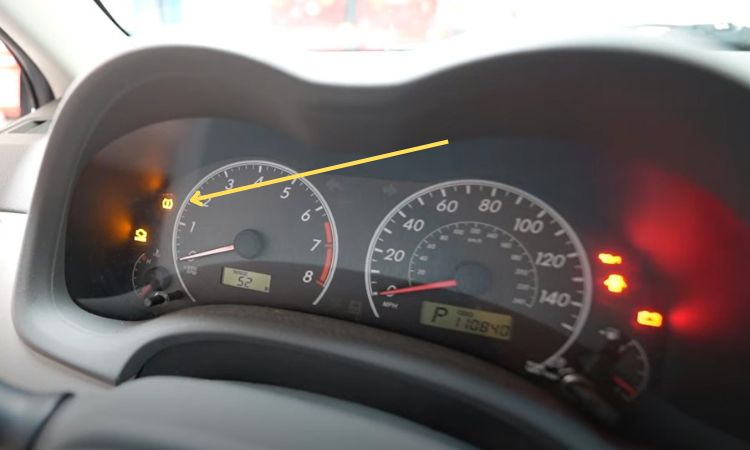
Problem 1: Tire Puncture or leak
When a tire punctures or leaks on a Toyota, the tire pressure goes down to the required level. It may trigger the light to blink. To turn off the blinking light, you need to repair the tire puncture or leak to maintain the required tire pressure.
Solution:
- Park your Toyota Corolla on a leveled surface and switch the engine off.
- Then check all four tires for punctures, such as nails or screws.
- If there is no puncture, then try to listen for a hissing sound near the tires, which may indicate a leak.
- Then, inflate all tires to the recommended pressure using a tire gauge and air pump.
- Now, apply soapy water to each tire’s tread and valve.
- Try to look for bubbles forming; you have a leak if you see the bubbles. Mark the point with a pointer.
- Now apply the puncture; while patching it, make sure no air leakage.
- Once done, inflate the tire and check the tire pressure. Ensure it should be up to the recommended level.
Problem 2: Faulty Tire Pressure Sensor
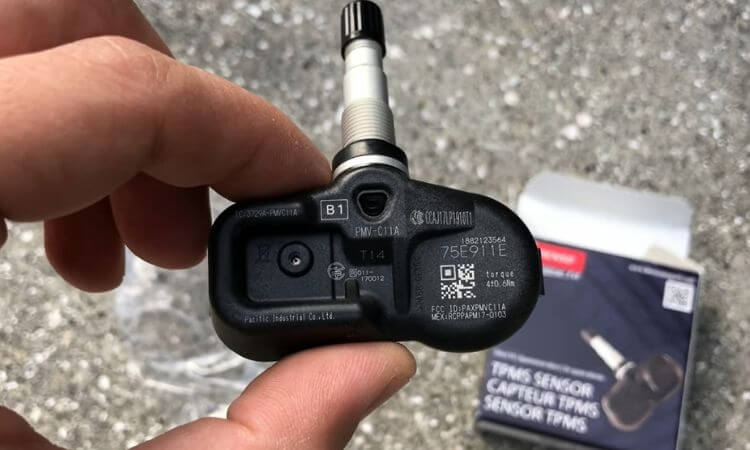
The Toyota tire pressure light can blink when the tire pressure sensor malfunctions. It detects inaccurate pressure readings or fails to communicate with the vehicle’s system. Ultimately, you experience light blinking and other potential problems with the tire pressure system.
Things You Need to Know! You may also experience tire pressure sensor issues with your Ford models 2010. Here are the findings if you want to face such issues with your 2010 Ford models.
Solution:
- Start with manually checking all tire pressure. You can use Milton S-925 Pencil Tire Gauge. It is affordable and simple to use for measuring accurate readings.
- If all tire pressures are correct, you may have a problem with the tire pressure sensor.
- Before replacing the tire pressure sensor, reset the tire pressure monitoring system (TPMS). If problems still exist, then replace the tire pressure sensor.
- After replacement, check and ensure the light has stopped blinking.
Problem 3: Damaged Tire Valve
If the tire valve of a Toyota Corolla is damaged, it can cause air leakage, which may lower the tire pressure. So, it may signal the tire pressure light to blink. You should consider the tire valve when the tire pressure light is blinking.
Solution:
- Switch off the Toyota Corolla, check the tire valve, and ensure it is okay.
- If the valve is damaged, replace it.
- First, deflate the tire by removing the valve core with a valve core tool to replace the valve. I recommend the Lisle 15190 Valve Core Tool for this purpose.
- Then unscrew the damaged valve and remove it.
- Insert the new valve into the valve hole and tighten it.
- Use a valve core tool to reinstall the valve core and inflate the tire to the recommended pressure.
- Measure the tire pressure gauge and ensure it is okay.
Problem 4: Faulty Tire Pressure Adjustment
Tire pressure adjustment can be a culprit for blinking tire pressure light. If the tire pressure adjustment system is faulty, it will send the wrong signals, and you may experience a blinking light.
Solution:
- Switch off the engine and check for the tire pressure. Make sure the tire pressure is accurate. You will need a manual gauge to measure the pressure level.
- If the pressure is okay, you may have the wrong tire pressure adjustment.
- Check for the tire pressure adjustment system and reset the adjustment by pressing the reset button for a few seconds.
- If the problem still exists, make manual adjustments. You can call a professional if the problem is unresolved after manual adjustment.
Problem 5: Malfunctioning Tire Pressure Warning Module
A malfunctioning tire pressure warning module in a Toyota can cause the tire pressure light to blink. The module monitors the tire pressure and sends signals to the dashboard. If it is faulty, you may experience a blinking light.
Solution:
- Take a reliable manual gauge and check the tire pressure. Ensure it should be according to recommended tire pressure.
- Also, check for the tire pressure sensors and ensure they work fine.
- After that, reset the TPMS to resolve the issue.
- If problems still exist, you may have malfunctioned with the tire pressure warning module. You will need to replace it. I recommend the ACDelco GM Original Equipment 96988603 Tire Pressure Monitoring System (TPMS) Sensor Receiver Module. It is an excellent option and performs very well.
My Toyota Corolla Tire Pressure Light Won’t Turn Off
The Toyota Corolla’s tire pressure light may not turn off for several reasons. Here is a list of possible causes that may make the tire pressure light not turn off.
- A malfunctioning tire pressure sensor
- Incorrect sensor calibration
- Low tire pressure
Why Does My Toyota Tire Pressure Light Blinks Then Stay On?
The blinking and steady-on of the Toyota tire pressure light indicate a potential issue with the tire pressure monitoring system (TPMS). Possible causes can be the low tire pressure, a malfunctioning TPMS sensor, or a fault in the system.
Note: Want to have tires free from tire pressure light issues? Look what I found about Falken Wildpeak AT3w vs BFG ko2 tires.
How To Turn Off The Tire Pressure Light Toyota Corolla 2010
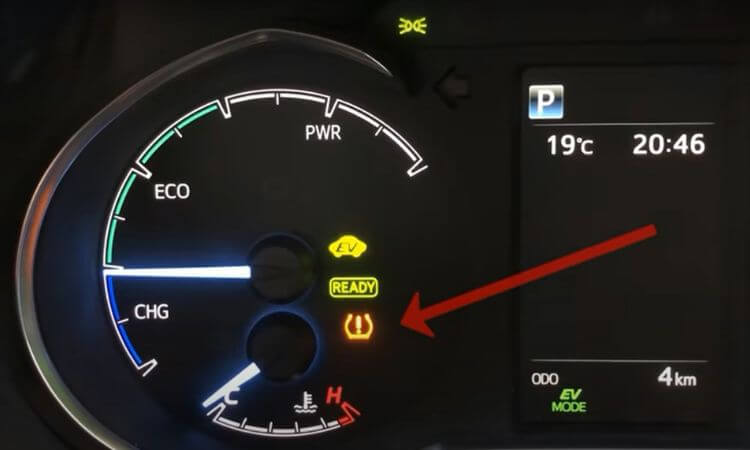
Follow the steps below to turn off the tire pressure light on a Toyota Corolla 2010.
- Ensure all tires are properly inflated according to the recommended PSI.
- Now, switch your vehicle ignition to the “ON” position but do not start the engine.
- Now, push and keep holding the tire pressure warning reset button. You may find that button near the steering wheel in Toyota Corolla. Wait until the light blinks three times.
- Once done, release the button. Then check for the tire pressure light and ensure it has been turned off.
2010 Toyota Corolla Tire Pressure Light Reset
Follow these simple steps to reset the tire pressure light on a 2010 Toyota Corolla. It will not take more than 2 minutes.
- First, measure and ensure all tires are properly inflated.
- Turn the key to “ ON” and locate the tire pressure reset button.
- Push and hold the reset button gently until the tire pressure light blinks three times.
- Once the light blinks, release the button, and check the light after a couple of seconds. The system reset and the light will go off.
2010 Toyota Corolla Tire Pressure Sensor Replacement
Replacing a tire pressure sensor is simple if you follow the simple steps below.
- First, park your Toyota Corolla on a flat surface and gauge the tire pressure.
- The tire that has low pressure may have a faulty pressure sensor.
- Remove the tire and, open it, locate the tire pressure sensor.
- Once located, check it for damage or wear.
- If the sensor is damaged, replace it with a new sensor. I recommend ACDelco GM Original Equipment 13598771 Tire Pressure Monitoring System (TPMS) Sensor for your Toyota Corolla.
- Once replaced, inflate the tire and ensure the tire pressure sensor is working fine.
When To Seek Professional Help?
If the Toyota tire pressure light blinks, you may have this issue for several reasons. Check for tire pressure, tire pressure sensor, TPMS, puncture, or tire valve. If the pressure still exists, you should take professional help. Only a professional guy can find the exact cause and help you fix that problem permanently.
Frequently Asked Questions (FAQs):
Why is my tire pressure light blinking on my Toyota Camry?
The tire pressure light on your Toyota Camry may be blinking due to low or malfunctioning tire pressure sensor. It can also be due to problems with the tire pressure monitoring system. It is better to check your tire pressure and have the system inspected immediately to quick removal the issue.
Why is my tire pressure light blinking while driving?
The blinking tire pressure light while driving indicates a problem with your TPMS. It can be due to low tire pressure, a malfunctioning sensor, or an issue with the TPMS. You should check your tires and TPMS system; contact a professional guy if the problem is not resolved.
How long can you drive with a tire pressure-blinking light?
The blinking tire pressure light indicates low pressure in one or more tires. If the issue is a minor one, you can continue to drive. But if you continue to drive, you run the risk of being in a serious accident (if the issue is serious).
How do I manually know which tire has low pressure?
To manually identify a tire with low pressure, check the tires by pressing or visually inspecting them. If not clear, then use a tire pressure gauge to check the air pressure of each tire individually. Once you get the readings, compare these readings with the correct tire pressure level requirement.
Conclusion
The blinking tire pressure light in a 2010 Toyota Corolla can be fixed by addressing the most common causes. It can be due to many causes, as I mentioned above.
To identify the true causes, you must examine each possibility one at a time. Once you have identified the cause, follow the instructions carefully to take the appropriate action to resolve the problem.
Suggestion! If you still need clarification, then it is better to call a professional to solve the problem.

